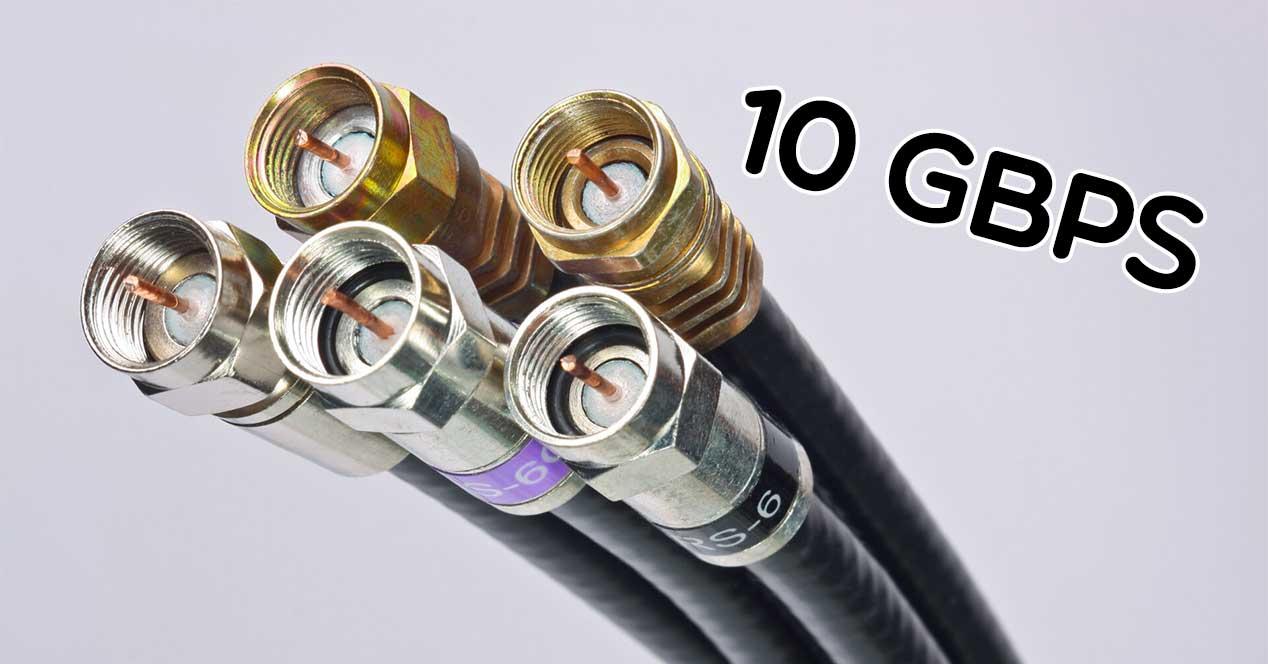Fiber optics is the fixed broadband that does not stop growing as the months go by in Spain. However, not all operators are betting directly on this connection. Although Vodafone still maintains a good part of its HFC cable network. For example, Comcast is already betting on DOCSIS 4.0 technology to achieve symmetrical speeds of up to 2 Gbps per cable, but is it what the red operator needs?
Comcast will offer symmetrical speeds with its cable network after implementing DOCSIS 4.0 technology. HFC is still several steps behind the fiber optic network to the home, although this may be the hope of Vodafone, among other companies, to renew its cable network and thus offer higher connection speeds.
The goal is 10 Gbps per cable
The operator Comcast has fully entered the next phase of the cable network in which it is committed to implementing DOCSIS 4.0 technology with the aim of renewing its cable. In today’s broadband market, a 10 Gbps connection via fiber optics has been available for some time. In Spain, for example, among the operators that offer these speeds are Digi and Orange. However, this has not yet happened on cable.
The real change that this technology aims to achieve is that high symmetrical speeds can be achieved. This operator in question has called its portfolio X-Class and the following speeds can be found: 300 Mbps, 500 Mbps, 1 Gbps and 2 Gbps. Although, it will not implement DOCSIS 4.0 all at once, but will do so continuously until the end of this year.

The DOCSIS 3.1 system will be moved to DOCSIS 4.0 technology in order to achieve higher speeds. Although, the real goal is to reach up to 10 Gbps through its cable network in a future that they do not see so distant: ‘Our connectivity experience, powered by the Xfinity 10G network, will allow us to offer speeds of up to 10 Gbps through of our traditional network to virtually all of our customers, plus even better reliability, lower latency and the best WiFi coverage in the home.’
This system takes advantage of the technology known as ‘Full Duplex’, in which the same network spectrum is used in order to further increase speeds, both upload and download. And the use of network spectrum is more efficient than with previous standards. Furthermore, it must be taken into account that this operator is one of those that has most invested in implementing this latest version of DOCSIS technology. In fact, testing began in April 2021 and, for example, in February of this year, the operator received its latest Xfinity 10G network update.
On the other hand, if we look back, you can see how Vodafone once began to implement and renew its cable network to DOCSIS 3.1 High Split technology. A fairly expensive process, but the truth is that with this technology you can renew the Vodafone HFC cable. In addition, greater symmetrical connections could be offered. So it could be the alternative of the red operator if you do not want to get rid of your cable network.













